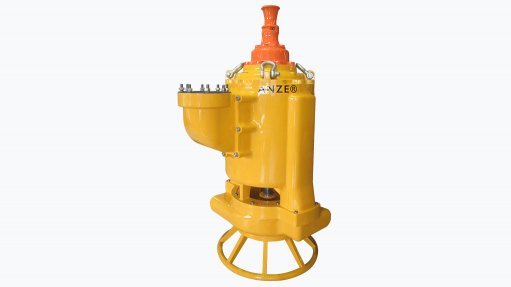Fighting against advanced persistent threats: could retrospective analysis be a secret weapon?
This article has been supplied and will be available for a limited time only on this website.
Rapid digital transformation is most definitely creating vast new opportunities across Africa, but, at the same time, it’s also opening up a larger attack surface for threat actors to exploit. In this environment, one capability proving to be a game-changer for local security teams is retrospective analysis.
What is retrospective analysis, and why does it matter?
Retrospective analysis is the process of going back through stored network traffic data to investigate suspicious activity, confirm the scope of an incident or uncover hidden threats.
Instead of relying solely on alerts generated in real time, this approach gives security teams the ability to rewind and replay what happened on the network, at the packet level, to get definitive answers.
Earlier this year, NETSCOUT surveyed cybersecurity professionals, all actively involved in incident response or security operations roles, with one data point standing out: 84 percent of respondents concurred that retrospective analysis is critical for uncovering and mitigating advanced persistent threats.
For African organisations, whether in banking, telecommunications, energy or government, this offers a vital layer of defence, particularly in regions where skilled security resources are stretched.
There are four different ways that retrospective analysis could help to boost local cybersecurity.
1. Validating alerts: Security alerts can be noisy and sometimes misleading. In sectors like banking - where false positives can lead to wasted time and delayed incident response - packet-level retrospective analysis allows security operations centre (SOC) teams to confirm whether a threat was real and then act decisively.
2. Proving firewall effectiveness: With cybercriminals increasingly using sophisticated bypass methods, businesses like telecom operators and ISPs, for instance, must regularly verify that firewalls are performing as expected. Retrospective data lets teams prove that defences stopped threats, or at least highlight where they failed, supporting compliance with regulations such as South Africa’s POPIA.
3. Enriching SIEM and EDR investigations: Security Information and Event Management (SIEM), Endpoint Detection and Response (EDR) and network detection and response (NDR) tools are powerful, but they can only analyse the data they collect. Retrospective analysis adds a deeper layer of evidence by showing the actual network traffic involved in an incident, something that is critical for industries like energy or mining, where operational technology systems must be protected alongside IT.
4. Enabling proactive threat hunting: African organisations are increasingly being targeted by long-term, stealthy campaigns. Retrospective analysis allows threat hunters to search historical data for early indicators of compromise; helping to identify malicious activity even if it isn’t in real time.
What could happen without it?
When historical network visibility is missing, investigation becomes less of a process and more of a gamble. Analysts are forced to act on partial evidence, unreliable assumptions or whatever data happens to be available at the moment.
This can create cascading risks. Not only does critical activity remain unseen, including attacker dwell time, lateral movement and covert communications, but incident response decisions can be delayed or misguided, resulting in either overreactions that disrupt business or underreactions that let threats persist. In addition, audit trails can break down, leaving teams unable to prove what was accessed, exfiltrated or blocked. This is a serious gap when compliance or disclosure is required.
In addition, organisations don’t just lose time; they lose trust in visibility, response and security posture. Without network-based retrospective analysis, the SOC team is reacting in the dark, and every missed connection becomes a missed opportunity to stop the breach.
Context is power
Network-based retrospective analysis isn’t just a nice-to-have; it’s the foundation for decisive, defensible security operations. It provides analysts with the ability to move beyond alerts and see the full narrative: who, what, when, where and how.
When teams can look back with clarity, they are able to reduce mean time to knowledge (MTTK), accelerate investigations with confidence, and strengthen post-breach forensics and reporting. They can also validate controls and demonstrate compliance, detect threats that were missed by real-time detections and hunt proactively for adversary behaviour, using real evidence.
“In a world where speed matters and certainty is critical, historical context becomes a competitive advantage,” explains Bryan Hamman, regional director: Africa at NETSCOUT. “The faster you can understand what happened, the faster you can take back control.
“In Africa, where services from mobile money to critical infrastructure are prime cyber targets, having the ability to ‘look back’ could mean the difference between containing a breach and becoming tomorrow’s headline.”
Comments
Press Office
Announcements
What's On
Subscribe to improve your user experience...
Option 1 (equivalent of R125 a month):
Receive a weekly copy of Creamer Media's Engineering News & Mining Weekly magazine
(print copy for those in South Africa and e-magazine for those outside of South Africa)
Receive daily email newsletters
Access to full search results
Access archive of magazine back copies
Access to Projects in Progress
Access to ONE Research Report of your choice in PDF format
Option 2 (equivalent of R375 a month):
All benefits from Option 1
PLUS
Access to Creamer Media's Research Channel Africa for ALL Research Reports, in PDF format, on various industrial and mining sectors
including Electricity; Water; Energy Transition; Hydrogen; Roads, Rail and Ports; Coal; Gold; Platinum; Battery Metals; etc.
Already a subscriber?
Forgotten your password?
Receive weekly copy of Creamer Media's Engineering News & Mining Weekly magazine (print copy for those in South Africa and e-magazine for those outside of South Africa)
➕
Recieve daily email newsletters
➕
Access to full search results
➕
Access archive of magazine back copies
➕
Access to Projects in Progress
➕
Access to ONE Research Report of your choice in PDF format
RESEARCH CHANNEL AFRICA
R4500 (equivalent of R375 a month)
SUBSCRIBEAll benefits from Option 1
➕
Access to Creamer Media's Research Channel Africa for ALL Research Reports on various industrial and mining sectors, in PDF format, including on:
Electricity
➕
Water
➕
Energy Transition
➕
Hydrogen
➕
Roads, Rail and Ports
➕
Coal
➕
Gold
➕
Platinum
➕
Battery Metals
➕
etc.
Receive all benefits from Option 1 or Option 2 delivered to numerous people at your company
➕
Multiple User names and Passwords for simultaneous log-ins
➕
Intranet integration access to all in your organisation






















